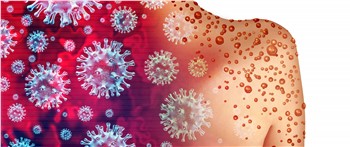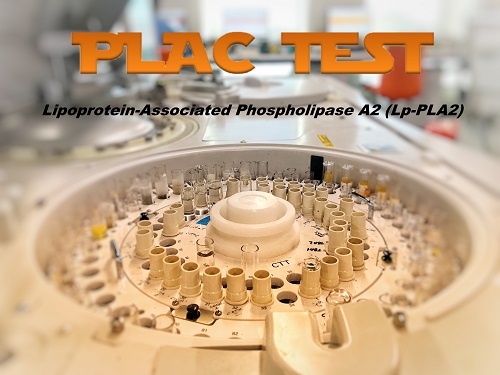Turkey's

Reference Laboratory
Services
Menu
Drug Levels
Microbiology
Clinical Biochemistry
Congenital Metabolic Disorders
Haematology Laboratory
Prenatal Screening Tests
Molecular Microbiology
Allergies
Transfusion Centers
LabBlog!

27 Ekm.22
Mevsimsel grip hastalığının etkenlerinden olan Influenza A ve B, Koronavirüs hastalığının etkeni SARS-CoV-2 virüsü, Solunum sinsityal virüsü enfeksiyonu etkeni RSV, Adenoviral solunum yolu enfeksiyonları etkeni olan adenovirüslerin hızlı tanısını sağlayan bir antijen testidir.

18 Tem.22
İnsanlarda ilk defa 1970 yılında Kongo Demokratik Cumhuriyeti’nde tespit edilmiştir. Sonrasında Orta ve Batı Afrika’daki ülkelerde görülen bu hastalığın sıklığı tam olarak bilinmemekle birlikte Kongo Demokratik Cumhuriyeti’nde 2005’e kadar yıllık 1000’e yakın olgu bildirilmiştir. Hastalık dönem dönem Afrika kıtasından enfekte hayvanlar ve insanlar aracılığıyla diğer kıtalara yayılmakta ve buralarda küçük küçük salgınlar yapmaktadır.

14 Ock.22
Genetik bir miras olarak ebeveynlerimizden aldığımız DNA’mızda bizlere ait bireysel özellikleri içeren tüm bilgiler bulunmaktadır. Bu bilgiler kan grubu, boy, kilo gibi bireysel özelliklerimizden, diyabet, kanser, kardiyovasküler hastalıklar gibi yüzlerce farklı duruma yatkınlık yada direnci belirleyen özelliklerle ilişkilidir. DNA’mızdaki bu bilgilerin çevresel faktörlerle etkileşmesi sonucu kişisel özelliklerimiz ve hastalıklar ortaya çıkabilmektedir.

22 Ara.21
PLAC TEST (Lp- PLA2 Aktivitesi) Kalp Hastalığı Riskinizi Biliyor musunuz ?
PLAC testi; kanda Lp-PLA2 enzim aktivitesini ölçen ve koroner kalp hastalığı riskini tahmin etmek için kullanılan bir belirteçtir.
Allergies are a health issue which reduce lifestyle quality and reduce efficiency at work or in school. The frequency of allergies seen is rapidly increasing. First used by Clemens von Pirquet in 1906, the term “allergy” can be defined asan “altered body response” and it stems from the greek allos other and ergos reaction.Allergies
An allergic response is an excessive sensitivity by certain individuals to agents which may not be deemed harmful by others. As a result of this excessive sensitivity a clinical evidence is manifested as an allergy.
Allergy symptoms:
Inhalation allergens (those taken in through the respiratory tract), dust mites, polens, mould and fungal elemants (especially spores), household pet hairs and their ephitelia, insects and insecticides.
- Skin; urticaria (hives), angiooedema, atopic dermatitis, itch, rash
- Eyes; redness, itching, watering
- Nose; sneezing, stuffiness, runny nose
- Lower respiratory tract; difficulty in breathing, wheezing, coughing
- Cardiovascular; palpitation, low blood pressure
- Digestive tract; gastritis,gastroenteritis, allergic oesophagitis
- Anaphylactic shock; oedema, sudden drop in blood pressure, itching, blushing, swelling of the tongue and throat, dizziness, nausea, diarrhea, shock,loss of consciousness
- Contact with skin (animal hair and epithellia, latex, polens, poisonous plants)
- By stings (bee stings)• Oral passage (foods, medication)
- The respiratory tract (polens, dusts, mold and fungii)
Inhalation allergens (those taken in through the respiratory tract), dust mites, polens, mould and fungal elemants (especially spores), household pet hairs and their ephitelia, insects and insecticides.
- Foods (food allergens)
- Food additive allergens
- Medicines
- Occupational allergens
Allergy Tests
Eosinophil count; increases with chronic allergic inflamation
Eosinophil Cationic Protein (ECP)
Activated eosinophils secrete ECP which may damage local tissues. Measured ECP values will reflect the degree of eosinophil activation. Bronchial asthma, atopic dermatitis, rhinitis and allergic eye diseases are a few inflamatory conditions which can accompany eosinophil activation. They are used in the monitoring and treatment of bronchial asthma.
Total IgE levels in allergic patients is generally high but is not directly related to the severity of the condition. A Total IgE level within the reference values would not discount an allergy. While an increased Total IgE may be seen in allergic patients it is also evident in parasitic infections, diseases of the liver, viral infections and malignity may also increase. As a result, in the past few years the Total IgE test has been replaced by tests for Specific IgE. Our laboratory processes allergens either singly or in panels.
Panels are prepared as a mixture of the most frequently seen allergens. When a positive result is obtained the allergens within that panel must each be examined.
The inhalant allergen test measures the concentration of the Specific IgE antibody developed against the respiratory allergens.
The pediatric allergy screening test determines if the child is prone to an allergy or not (genetic predisposition to developing atopy-Type 1 allergic reaction) and provides probability to the highest degree.
In addition to the above listed allergy tests our laboratory has a wide panel range for specific IgE allergy testing.
Blood tests measure the amount of IgE class antibodies formed against a specific allergen; as a result snesitivity and accuracy are high. Since serum IgE half life lasts only 2-3 days, it allows us to obtain up-to-date values. On the other hand, as the half life of mast cell related IgE’s can last anywhere from months to possibly years, the positive results as obtained in skin tests to determine allergies may not always be directly proportional with IgE antibodies.
Eosinophil Cationic Protein (ECP)
Activated eosinophils secrete ECP which may damage local tissues. Measured ECP values will reflect the degree of eosinophil activation. Bronchial asthma, atopic dermatitis, rhinitis and allergic eye diseases are a few inflamatory conditions which can accompany eosinophil activation. They are used in the monitoring and treatment of bronchial asthma.
Total IgE levels in allergic patients is generally high but is not directly related to the severity of the condition. A Total IgE level within the reference values would not discount an allergy. While an increased Total IgE may be seen in allergic patients it is also evident in parasitic infections, diseases of the liver, viral infections and malignity may also increase. As a result, in the past few years the Total IgE test has been replaced by tests for Specific IgE. Our laboratory processes allergens either singly or in panels.
Panels are prepared as a mixture of the most frequently seen allergens. When a positive result is obtained the allergens within that panel must each be examined.
The inhalant allergen test measures the concentration of the Specific IgE antibody developed against the respiratory allergens.
The pediatric allergy screening test determines if the child is prone to an allergy or not (genetic predisposition to developing atopy-Type 1 allergic reaction) and provides probability to the highest degree.
- fx5 = Childrens food panel + Inhalant allergen screen (Alatop)
- Grasses, grain pollens panels (g1, g2, g4, g5, g6, g11, g12, g15, gx1, gx2, gx3)
- Weeds / flowering plant allergens panels (w1, w9, w20, w21, wx1, wx3, wx5)
- Tree allergens panels (t2, t3, t4, t5, t7, t9, t18, tx1, tx2, tx7, tx9)
- Household dusts, dust mites panels (h1, h2, d1, d2, d70, hx1)
- Animal allergen panels (e1, e2, e3, e4, e5, e20, e78, e201, e84, ex1, ex71, ex72)
- Mould allergens panels (m1, m2, m3, m4, m5, m6, m70, mx1, pax3)
- Food allergens and panels (f1, f2, f4, f13, f14, f17, f25, f27, f33, f44, f75, f93, f256, fx1, fx2, fx3, fx5, fx6, fx73, fx13, fx14, fx16, fx50)
- Insecticide allergens (i1, i3, i4, i6, i70, i71)
- Medication allergens (c1, c2, c5, c6, c73)
- Tiroksin, Atropin, Aspirin, Paracetamol, Cephalosporin, Metamisol, Ciprofloxacin, Tetracyclin)
In addition to the above listed allergy tests our laboratory has a wide panel range for specific IgE allergy testing.
Blood tests measure the amount of IgE class antibodies formed against a specific allergen; as a result snesitivity and accuracy are high. Since serum IgE half life lasts only 2-3 days, it allows us to obtain up-to-date values. On the other hand, as the half life of mast cell related IgE’s can last anywhere from months to possibly years, the positive results as obtained in skin tests to determine allergies may not always be directly proportional with IgE antibodies.
In comparison to other skin tests, some of the other advantages to allergy tests on blood is that the need to be taken off medication can be foregone and is applicable even in the presence of wide spread allergic skin reactions. The allergy systems used in our laboratory use a chemiluminescent process.


